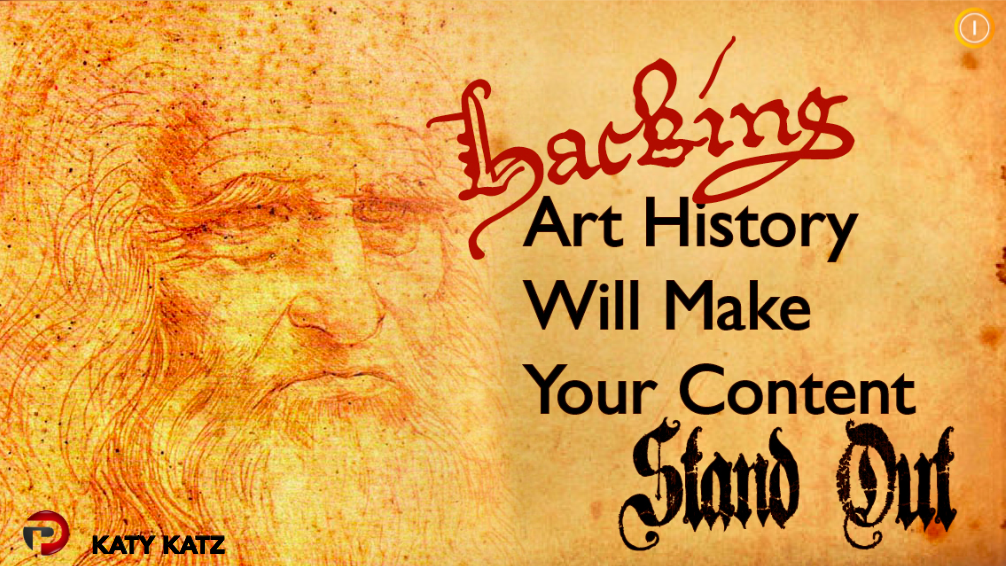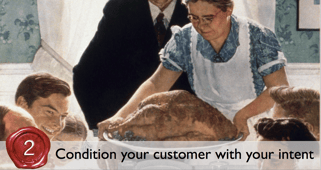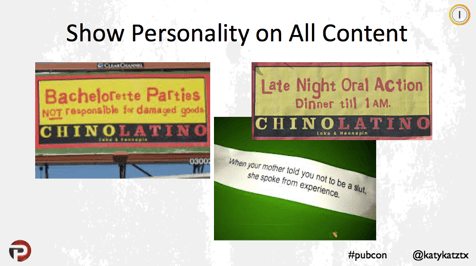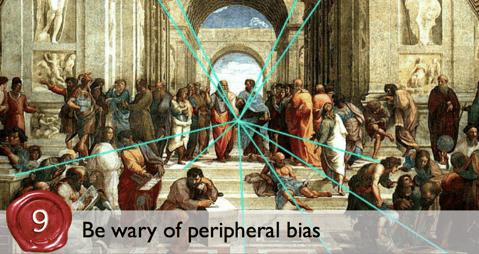
One of the worst feelings as a digital marketer is putting time and effort into a piece of content, hitting publish, and then hearing crickets. I know I am personally more worried about having no engagement than about getting a negative reaction to one of my posts.
At least with a negative reaction I’ve ignited some sort of interest from the readers, even if that reaction is that they completely disagree with what I’m saying. There is something to measure. And digital marketers live and die by our measurements.
There is an epidemic of low-engagement content now more than ever which boils down to a simple problem: data overload. There is so much content being pumped into the web now that even good content has become noise.
“Most people forget 90% of what you share.” – Dr. Carmen Simon
I tackled this issue at Pubcon last week with tips for going from good content to great content by learning from the venerable storytellers of the past. In my session titled, “Hacking Art History Will Make Your Content Stand Out,” Here are 11 classical artists' tricks that you can use in your content marketing today.
For great content …
1. The customer can easily see himself
Your customer should recognize himself / herself from the moment they start reading their content. They should start to think, “Hey, that happens to me!” These mental connections not only help them form a relationship with your brand but also embed those factors in their memory.
People truly do judge a book by its cover. The Atlantic recently shared a study, which showcased examples of the quick judgments that people make based on appearance alone. The same is true for your content.
To achieve these ‘aha’ moments with your customers, you have to understand your personas on a personal level. You cannot hope to reach your customers with your content if you haven’t yet uncovered personal information about them. ![]()
2. Condition your customer with your intent
I shared an example of associative conditioning and how simple it really is. Repeat a color three times in your head: white, white, white.
Now I’m going to ask a question, “What do cows drink?”
If you thought 'milk,' don’t feel bad. That is the psychological principle of conditioning.


Politicians are really good at conditioning. Ronald Reagan built an entire political campaign around Norman Rockwell’s image of the ideal family. By sharing images of he and his family in that format, he was conveying that a vote for him was a vote for bringing America back to family values. All by making his family resemble a familiar image.
3. Weave in a familiar story
One of the most tried and true classical artist techniques was to paint a well-known fable, verse, or message. The example I shared was Boticelli’s “The Birth of Venus.” Artists knew that the viewers would already have inside information about this story. They could relate personally to the message because they knew that Venus was born from a shell.
Familiarity helps with memory.
Think about when you decide to buy a new car. Suddenly, that’s the only car that you see on the road. That’s because your brain is wired to recognize familiar objects.
People are more likely to remember content that reminds them of something they are familiar with. ![]()
4. Begin content design with the end in mind
Most artists made a self-portrait with the intent of showing their authority in their work. They started with the intention of building authority and designed a piece of artwork to match that intent.
Think about what your goals are for your content and make sure you develop a strategy to accomplish those goals. This is why influencer-bait posts work so well. If you want content that influencers will share, ask them to be involved from the onset.
5. Have a signature style
The best content creators have a recognizable voice that is as easily discernable as a Marc Chagall painting. One of the people in marketing who truly excels at this is Marty Weintraub, founder of AimClear. Whether Marty is speaking, writing, or even chatting with you, he has a personality that can be felt through his words.
Brands should not be afraid to do this too. There is a restaurant in Minneapolis called Chino Latino which is really good at utilizing a consistent, albeit risqué, voice across all of its content. From billboards to fortune cookie notes, you know you’re reading something from their brand.

6. Appeal to human emotion
Human emotion was a hot topic at Pubcon this year. Part of the reason that Gustav Klimpt’s “The Kiss” is one of the most famous paintings of all time is because we immediately feel what the two people in the painting are experiencing just by looking at it.
Emotion is a powerful tool for content marketers. ![]()
The Content Marketing Institute created an excellent recap of the emotional content that we all crave a few years back which includes content that:
- Reminds us life is short
- Helps us believe in something bigger
- Takes us along a journey
- Inspires or surprises us
- Makes us laugh (or cry)
- Challenges us
7. Bring the message to your audience
As inbound and search engine marketers, it can be hard for us to justify building authoritative content off of our website unless there is something tangible in it for us (I’ll say the dirty word – LINKS). But there is so much more to building content for your audience where they are. This is why artists paint murals and Michelangelo was commissioned to paint the Sistine Chapel. The artists go where the audience is and you should too.
Build time into your strategy for native blogging in forums, long-form social media interactions, and guest posting. This will help your brand build authority, recognition, and subsequently, grow your audience.
8. Get back to the basics of color theory
Part of the reason that Picasso’s blue period is the most well-known of his works is because the color has an easily translatable objective: sharing sadness or emotion. When we see blue in his paintings, we immediately know what he was conveying.
You should be utilizing color theory on your website. Not only do certain colors convey specific messages, but they also can help make the site more aesthetically pleasing, draw your reader’s eye around the page, and highlight a specific call to action.
“85% of shoppers place color as a primary reason for why they purchase a particular product.” - KissMetrics
9. Be wary of peripheral bias
Classical artists like Raphael used perspective theory to draw the viewer’s eye to the most important part of their painting. This was often a figure that was central to their story.

The human eye naturally sees the central point of vision most clearly and this can be used to a marketer’s advantage. This is one of the reasons why infographics work so well. They pull the eye from peripheral vision. But you can adjust your blog and website content to compensate for this as well with colors in your headers, bulleted lists, and quote boxes.
10. Be ahead of your time
Just be great like Picasso. Easier said than done, right? Well, one actionable example that I shared is pre-marketing for a product. My friend Stephanie is a yoga influencer on Instagram. She has built her audience to nearly 70,000 followers just by sharing her journey.
And while she is getting the benefit of having brands reach out to her now, the real reward will come when she launches her own retreat in the next couple of years. She has already built a targeted audience of potential customers that are loyal to her as a brand.
11. Don’t be afraid to take a few risks
Vincent Van Gogh could have been worried that he would be written off as a lunatic that didn’t know how to properly render a cityscape or sky. But he had a vision of conveying emotion in his paintings and people responded.
One of my old bosses, Josh Braaten, liked to implement the 70:20:10 rule of thumb. Spend 70 percent of your time on your core content that you are certain will drive leads. Spend 20 percent of your time on content takes a little more effort like infographics, and 10 percent on ideas that are a little more out there.
When we first came up with the idea of #NoSaaSHoles, we weren’t sure if people would think we were funny or crazy. Turns out you all have our same twisted sense of humor and we’ve had a blast coming up with the puns with you. I look forward to many more SaaSy jokes in the future! ![]()
Go Out and Create Great Content
Now you know, classic artists didn’t get recognition simply by slapping some paint on a canvas. They had tricks up their sleeves that you can utilize today to make your content more memorable.
Here is a list of free tools that you can use to start creating your great content:
- Find It: Buzzsumo
- Plan It: Trello
- Make It: Content Creation Checklist
- Fill It: ProductHunt
- Stock It: Pexels
- Edit It: Grammarly
- Share It: Buffer
- Engage: Forums like SaaS.Community
Like (or hate) what you read? Let me know in the comments below!


